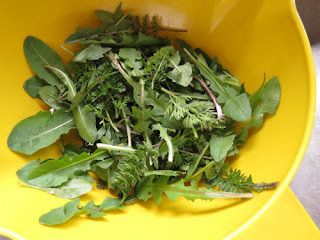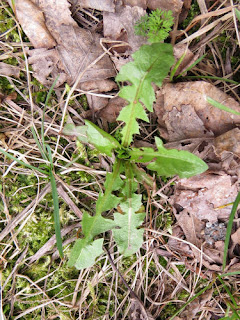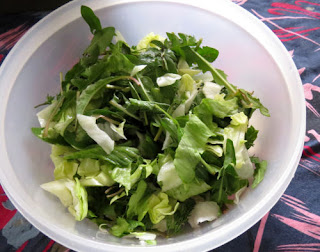 savory muffins with greens and pesto (photo by jhy) savory muffins with greens and pesto (photo by jhy) |
You will need:
- 3 cups flour
- 1 T. baking powder
- 1 t. salt
- 3 eggs
- 1/2 c. oil
- 1/2 c. yogurt (at least)
- 1 c. milk
- 10 oz cooked greens (spinach, nettles, others) See Nettles
- 1/2- 1 c. pesto See Garlic Mustard Pesto
- 1 c. shredded cheese (cheddar, mozzarella, etc)
spatula
2 medium bowls
measuring cups & spoons
muffin pans for regular size (2 1/2 inch) muffins
Preheat oven to 350 degrees F.
Prepare 12 muffin cups. You can insert liners, but for less bread loss on the paper, try How to Bake Muffins that Won't Stick to the Pan (link coming soon).
In a large bowl, mix the dry ingredients.
In a separate bowl, beat the eggs, add oil, milk and yogurt and mix well. Add the squeezed out cooked greens (save the juice). If the liquid seems thick add in a little of the juice from the greens. This is where you have to do some guessing in this recipe because the amount of liquid in the greens, and the thickness of the pesto may require the addition of more liquid.
 savory muffins ready to bake (photo by jhy) savory muffins ready to bake (photo by jhy) |
Finally, fold in the cheese and pesto until distributed.
Fill the 12 muffin cups. Bake for 20-25 minutes until tester or toothpick comes out clean. Remove from pans.






















